Industry-Sponsored Student Capstone Projects
2021/2022
In the 2021/22 academic year the industry capstone program was supported by 62 sponsors and 95 real-world projects. Over four hundred students from across the College of Engineering participated. Scroll down to learn more about each project.Access Laser
Automatic Load-Pull Tuner
This student team worked to build an automated load-pull tuner, a tool used for the RF engineers to characterize new transistors and test the performance of newly designed radio frequency (RF) Power-Amplifiers. The team designed a circuit (delivering the PCBA) with a control firmware and a graphical user interface (GUI) to acquire the required data and save them in the computer. The combination of PCBA, firmware, and GUI enables RF Engineers to deliver pulses, change the load to the amplifier, and acquire test data from an oscilloscope for their design analysis.
Alaska Center for Energy and Power (ACEP)
Synthetic Network for the Alaska "RainBelt" Electric Power System
The student team developed publicly accessible Alaska-based power system models and associated load and generation data representing seasonal and futuristic scenarios. The model and data is shared via GitHub and the BetterGrids repository, and is reproducible through code or documentation. Prior to this project, Alaska and Alaskan generation or load data were excluded from existing power system models, which are essential for assessing operations and planning of electric grids, including power systems' stability and future generation and load scenarios.
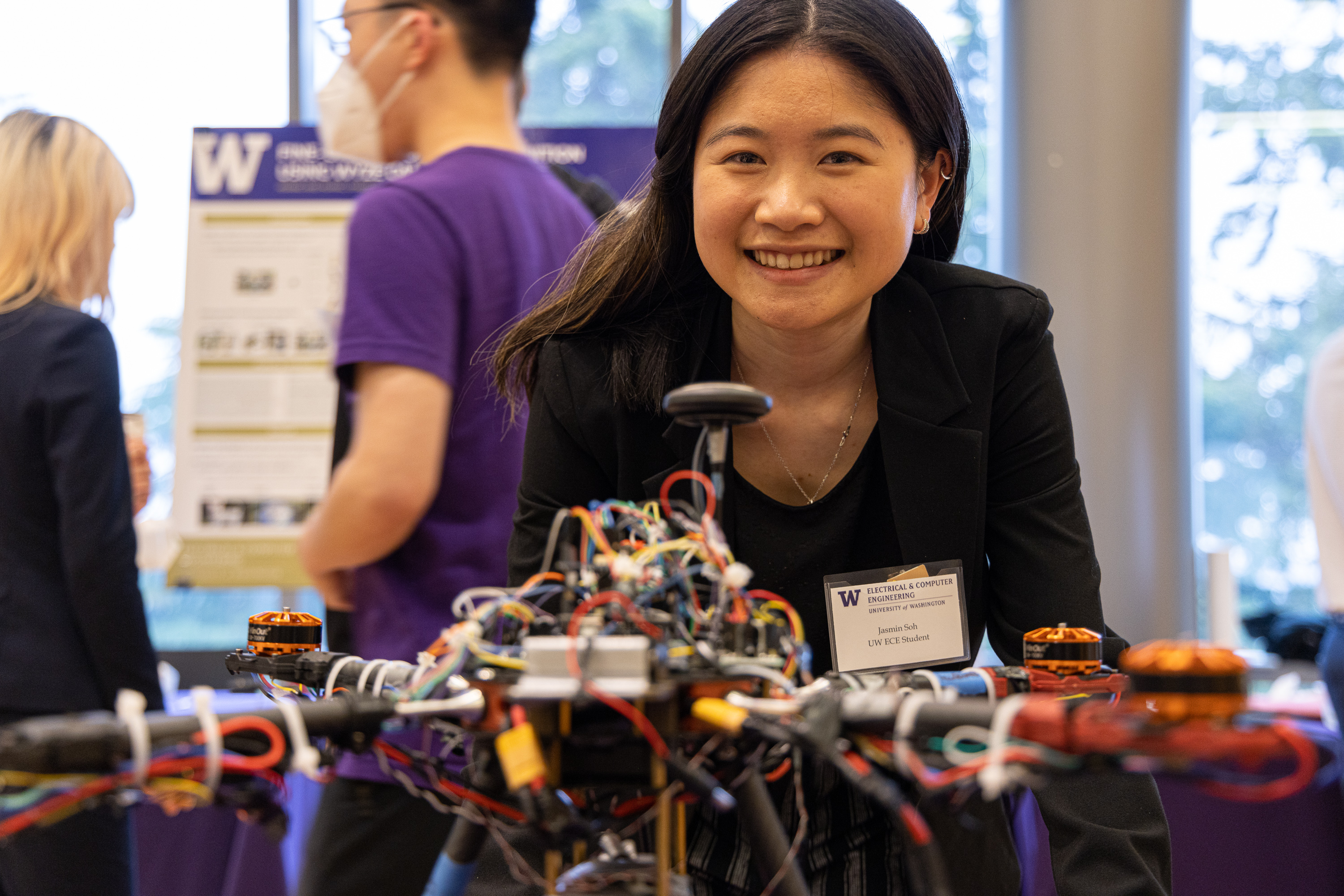
Amazon
Airframe Health Monitoring System
The student team worked to develop and demonstrate the capability and benefits of a health monitoring system for a UAS airframe. They used onboard sensors and flight data to determine airframe health, predict maintenance intervals and diagnose off nominal airframe behavior. The team examined the existing sensing capability of a drone to determine potential benefits of health monitoring, explored additional sensing capabilities and the added capability of a monitoring system, and down-selected and developed a system capable of tracking the performance of an airframe component through one lifecycle.

Amazon
Energy Efficient Wireless Systems and Sustainability
Sustainability has become a key factor in engineering and design of modern electronics. One of the major contributors of carbon impact is wireless devices, during the production of integrated circuits and usage of wireless communication over the lifecycle of the product. Amazon seeks to reduce the carbon footprint of its products and processes. This student team researched developments in energy-efficient wireless communication, summarize findings in and extensive report, and proposed alternative strategies for energy-efficient wireless communication and applications.
ATS Automation
ATS Augmented Installation and Checkout
ATS is a building automation company that designs and installs solutions that control various systems in a building. The student team built an augmented reality application that can assist installers, electricians, and field technicians during the installation phase of projects in identifying the incoming and outgoing wires on a building automation system, BAS, or controller.
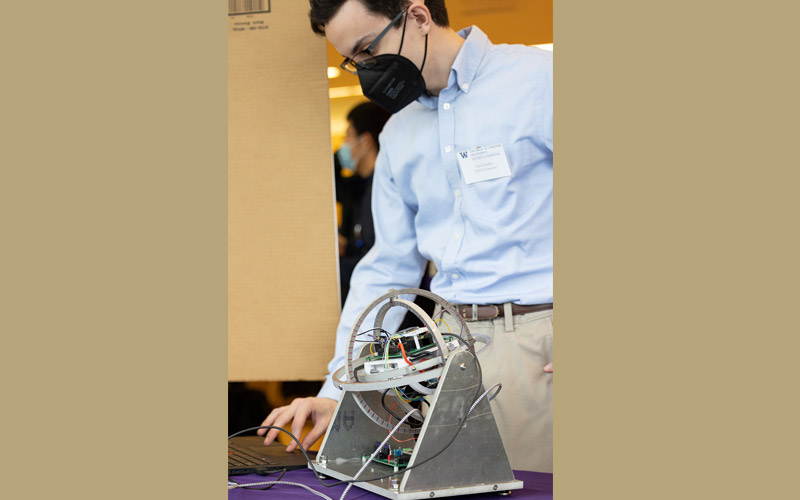
Booz Allen Hamilton/UW Applied Physics Laboratory (APL)
UW Human Powered Submarine (HPS) Autopilot Project - Test Phase 1
This student team built on the development of the prototype Autopilot module, developed a validation and verification test regimen, and conducted bench testing in a simulated environment with the goal of providing the UW Human Powered Submarine (HPS) team with a fully bench-tested working prototype of the Autopilot module for incorporation into the current HPS design. The objective of the validation and verification testing was to ensure the autopilot sensor can tolerate off-axis installation in the actual vehicle and can tune control surface outputs based on actual control surface deflection areas and lever arms off the vehicle center of rotation.
Coupang
Image Quality Control for Coupang Catalog
Coupang is an international e-commerce platform that hosts billions of sellable items. At the time of this project, human operators are performing quality control on only a small number of seller listings, a process that cannot be scaled as the business grows rapidly. The student team worked to create scalable models to improve image quality control for the Coupang marketplace including detection of unwanted elements and image super resolution.
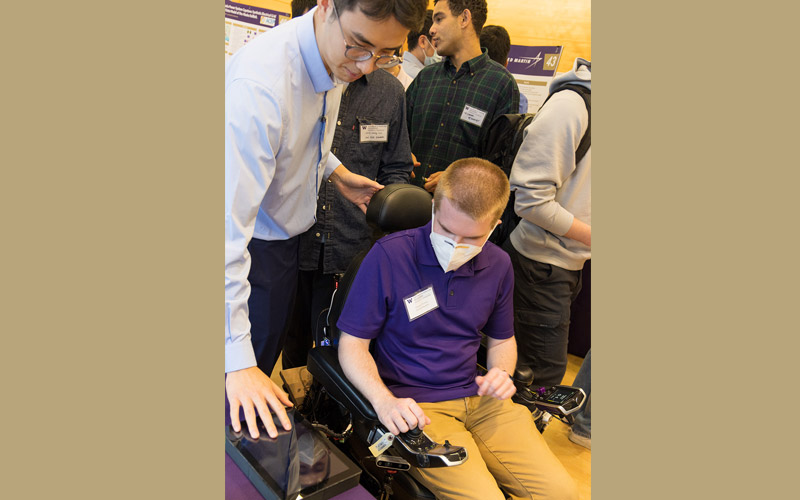
Cyberworks Robotics
Low-cost Perception System and Remote Management of an Autonomous Wheelchair
Autonomous Wheelchairs increase freedom and ease of mobility for the most vulnerable peoples in society. This student team integrated sensors and developed a perception system for autonomous, campus-wide navigation, with the goal of reducing reliance on LiDAR based SLAM. The team also focused on integrating system fault detection and a remote wheelchair management system into the Cyberworks Autonomous Navigation stack.
Fluke
Fluke ADC Testing Platform
To make the process of testing analog to digital converters (ADC) efficient, the student team designed a flexible ADC testing platform that can assess the performance of different ADCs. The system integrates three different hardware elements: PC, microprocessor, and ADC shield. The system provides a friendly user interface, such that users can adjust ADC parameters and interact directly with different ADC shields.
Horizon Air
Aircraft Modification Status App
The maintenance of aircrafts is a critical factor for safe flights. Aircraft technicians need to have a consistent and reliable system that obtains working data about specific aircraft. This student team created an app that generates QR codes that take information from Horizon Air's database on aircraft to be scannable on mobile devices and present technicians in the filed with the information they need to perform aircraft maintenance.
Insitu
OAK-D Drone Landing
The student team used the capabilities of AI technology to help guide and land a UAV. The team explored the application of DepthAI and object detection to recognize and guide a drone to land on a platform, and successfully modeled a multirotor VTOL vehicle landing on a moving ship with the use of an AI camera.
Intel
Rise of Web-based Computing Trends on the Client Side
Data and user activity and trends can help in improving future CPU development. The student team studied and compared the trends of native apps versus web-based apps and their impact on client resource utilization based on user-web activity interaction matrix. The team studied "progressive web apps," "hybrid web apps," and "pure web apps." Finally, the team analyzed the correlation of these trends in relation to processor metrics such as page faults, power consumption, browser and parent category usages, etc.
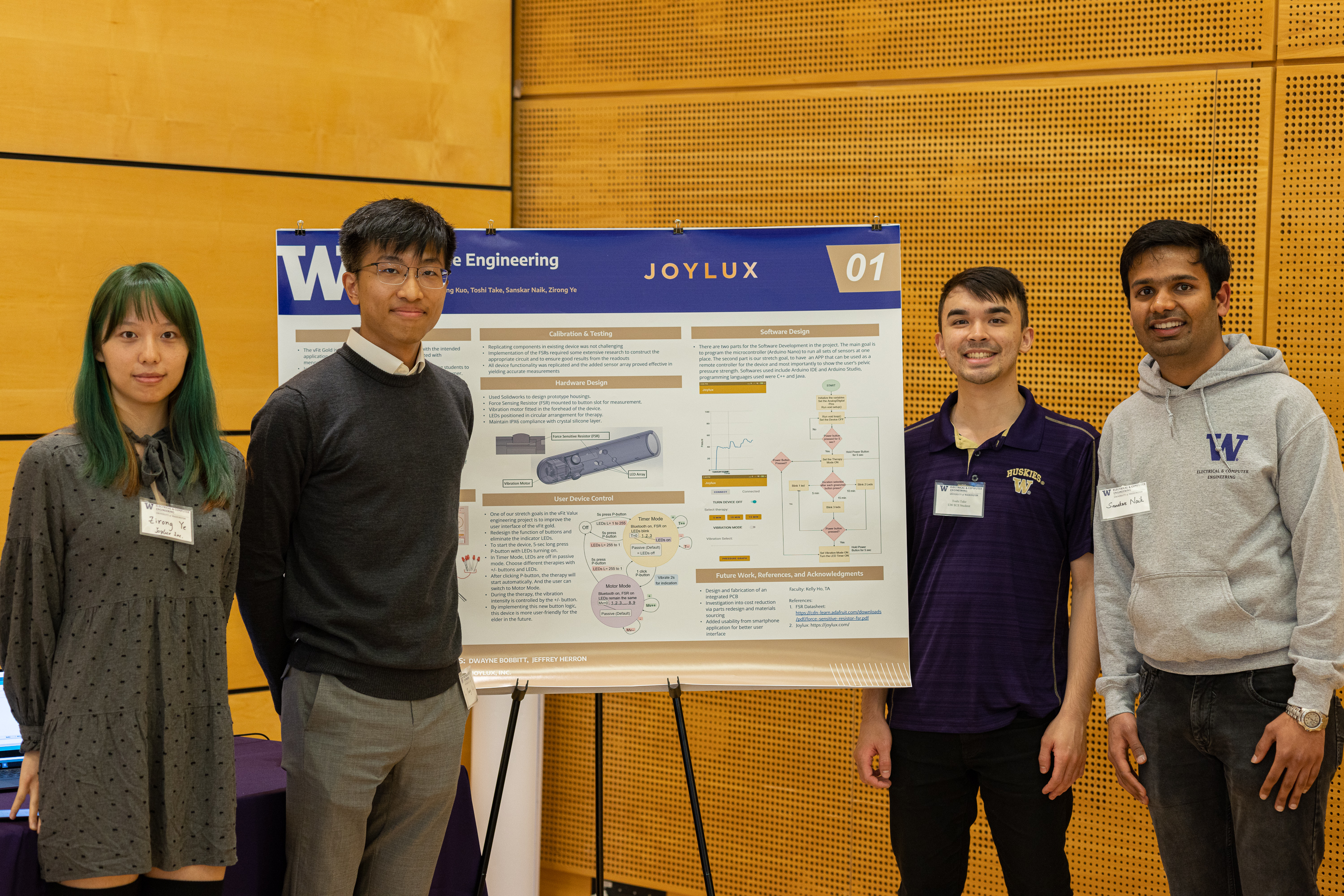
Joylux
Value Engineering
The the vFit GOLD is a wellness device intended to alleviate the symptoms of menopause. The student team worked to add an array of sensors for enhanced biofeedback to the user. The prototype shows the team's proof of concept in action, with pressure sensors to monitor the improved strength of the pelvic floor muscles, while also tracking and displaying data through an updated smartphone app.
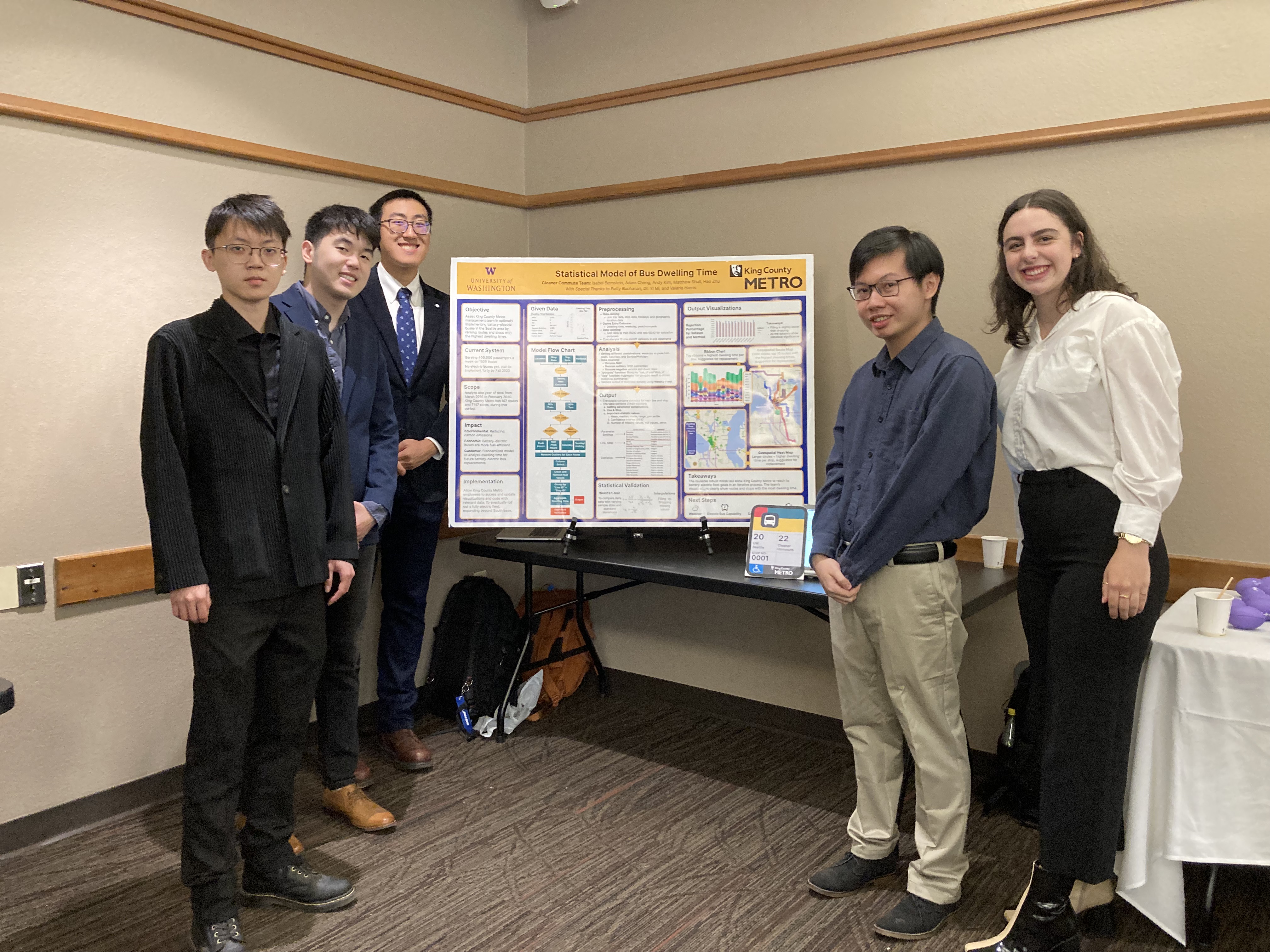
King County Metro
Analysis of Bus Dwelling Time Pattern in King County
This student team developed statistical models to give King County Metro the estimates of bus dwelling and idling time under different times of day, different types of weather, traffic and road conditions. The dwelling and idling time is related to the quantities of air pollutants such as Particulate Matter (PM), Nitrogen Oxide (NOx), and CO2. Optimizing bus dwelling time and minimizing idling time helps King County Metro reduce air pollutants in the greater Seattle area and improve environmental sustainability.

Lockheed Martin
JetRacer Soccer League
The student team worked to build a customizable soccer arena and four tenth scale RC cars, starting from the NVIDIA self-driving JetRacer design, which utilizes artificial intelligence to play soccer competitively in the designed field. This work provides insights into the use of machine learning in a competitive environment.
Related News

Fri, 09/20/2024 | UW Civil & Environmental Engineering
Smarter irrigation for a greener UW
A new project combines satellite data with ground sensors to conserve water and create a more sustainable campus environment.
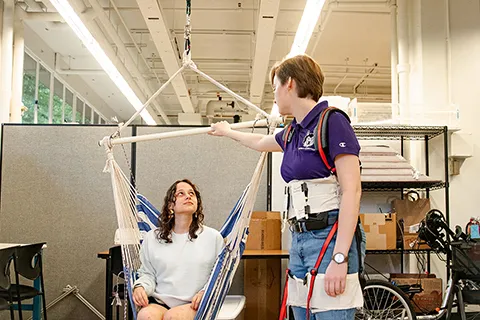
Mon, 09/09/2024 | UW Mechanical Engineering
Testing an in-home mobility system
Through innovative capstone projects, engineering students worked with community members on an adaptable mobility system.
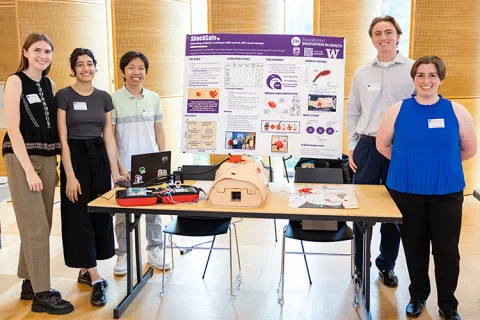
Mon, 08/19/2024 | UW Mechanical Engineering
Students strive to ensure accurate AED shock dosage
ShockSafe, developed by students with the help of mentors from Philips and Engineering Innovation in Health (EIH), can distinguish between children and adults during cardiac arrest emergencies.

Wed, 08/07/2024 | Snohomish County News
Snohomish County, University of Washington partnership boosts efficiency in enterprise scanning center
UW Industrial and Systems Engineering Capstone Project set to save Snohomish County over $40,000 annually.